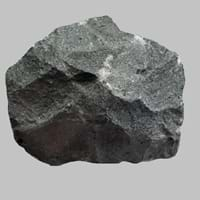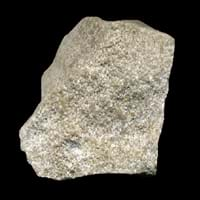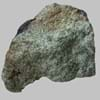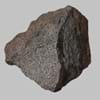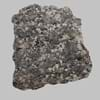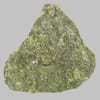Definition
Latite is an igneous, volcanic rock, with aphanitic-aphyric to aphyric-porphyritic texture
Oolite is a sedimentary rock formed from ooids, spherical grains which are composed of concentric layers of calcite
Discoverer
Unknown
Unknown
Etymology
From the Latin word latium
From oo- + -lite, after German Oolit. A rock consisting of fine grains of carbonate of lime
Class
Igneous Rocks
Sedimentary Rocks
Sub-Class
Durable Rock, Medium Hardness Rock
Durable Rock, Medium Hardness Rock
Other Categories
Fine Grained Rock, Opaque Rock
Fine Grained Rock, Opaque Rock
Texture
Aphanitic to Porphyritic
Clastic or Non-Clastic
Color
Black, Brown, Colourless, Green, Grey, Pink, White
Black, Blue, Brown, Cream, Green, Grey, Pink, Red, Silver, White, Yellow
Durability
Durable
Durable
Scratch Resistant
Yes
Yes
Appearance
Rough
Rounded and Rough
Interior Uses
Decorative Aggregates, Entryways, Interior Decoration
Decorative Aggregates, Flooring, Interior Decoration
Exterior Uses
As Building Stone, As Facing Stone, Garden Decoration, Office Buildings
As Building Stone, As Facing Stone, Garden Decoration, Paving Stone
Other Architectural Uses
Curbing
Not Yet Used
Construction Industry
As a Flux in the Production of Steel and Pig Iron, As a Sintering Agent in Steel Industry to process Iron Ore, As Dimension Stone, Cement Manufacture, for Road Aggregate, Making natural cement, Manufacture of Magnesium and Dolomite Refractories
Cement Manufacture, Cobblestones, Landscaping
Medical Industry
Not Yet Used
Not Yet Used
Antiquity Uses
Artifacts, Monuments, Sculpture
Artifacts
Commercial Uses
An Oil and Gas Reservoir, As a Feed Additive for Livestock, Metallurgical Flux, Soil Conditioner, Source of Magnesia (MgO)
Creating Artwork, Jewelry, Used in aquariums
Types
Rhomb porphyries
Not Available
Features
Host Rock for Lead
Available in lots of colors, Generally rough to touch, Very fine grained rock
Archaeological Significance
Monuments
Used
Not Yet Used
Famous Monuments
Data Not Available
Not Applicable
Sculpture
Used
Not Yet Used
Famous Sculptures
Data Not Available
Not Applicable
Figurines
Used
Not Yet Used
Formation
Latite is a fine-grained, hard rock which is a type of metasomatite, essentially altered basalt. It forms with or without crystallization, either below the surface as intrusive rocks or on the surface as extrusive rocks.
Oolites form when layers of calcite are deposited around a sand grain or fossil piece and are rolled around in calm water, which makes them round.
Mineral Content
Alkali feldspar, Biotite, Plagioclase, Pyroxene
Calcite, Chert, Clay, Dolomite, Quartz, Sand, Silt
Compound Content
CaO, Cl, MgO
Aluminium Oxide, Ca, NaCl, CaO, Iron(III) Oxide, FeO, MgO
Types of Metamorphism
Burial Metamorphism, Cataclastic Metamorphism
Not Applicable
Types of Weathering
Biological Weathering, Chemical Weathering, Mechanical Weathering
Biological Weathering, Chemical Weathering, Mechanical Weathering
Types of Erosion
Chemical Erosion, Water Erosion, Wind Erosion
Chemical Erosion, Coastal Erosion
Grain Size
Fine Grained
Fine Grained
Fracture
Conchoidal
Conchoidal
Porosity
Very Less Porous
Less Porous
Luster
Subvitreous to Dull
Pearly to Shiny
Compressive Strength
Not Available
Cleavage
Perfect
Non-Existent
Specific Gravity
2.86
Not Available
Transparency
Translucent
Opaque
Density
2.8-2.9 g/cm3
Not Available
Specific Heat Capacity
Not Available
Resistance
Heat Resistant, Pressure Resistant
Heat Resistant, Wear Resistant
Deposits in Eastern Continents
Asia
Not Yet Found
Brunei, India, Indonesia, Malaysia, Singapore, Thailand, Vietnam
Africa
Not Yet Found
Cameroon, Chad, Ghana, Kenya, Malawi, Sudan, Tanzania, Togo, Zambia, Zimbabwe
Europe
Bulgaria
United Kingdom
Others
Not Yet Found
Not Yet Found
Deposits in Western Continents
South America
Not Yet Found
Colombia
Deposits in Oceania Continent
Australia
Not Yet Found
Adelaide, New Zealand, Queensland, Tonga, Victoria, Yorke Peninsula
All about Latite and Oolite Properties
Know all about Latite and Oolite properties here. All properties of rocks are important as they define the type of rock and its application. Latite belongs to Igneous Rocks while Oolite belongs to Sedimentary Rocks.Texture of Latite is Aphanitic to Porphyritic whereas that of Oolite is Clastic or Non-Clastic. Latite appears Rough and Oolite appears Rounded and Rough. The luster of Latite is subvitreous to dull while that of Oolite is pearly to shiny. Latite is available in black, brown, colourless, green, grey, pink, white colors whereas Oolite is available in black, blue, brown, cream, green, grey, pink, red, silver, white, yellow colors. The commercial uses of Latite are an oil and gas reservoir, as a feed additive for livestock, metallurgical flux, soil conditioner, source of magnesia (mgo) and that of Oolite are creating artwork, jewelry, used in aquariums.
